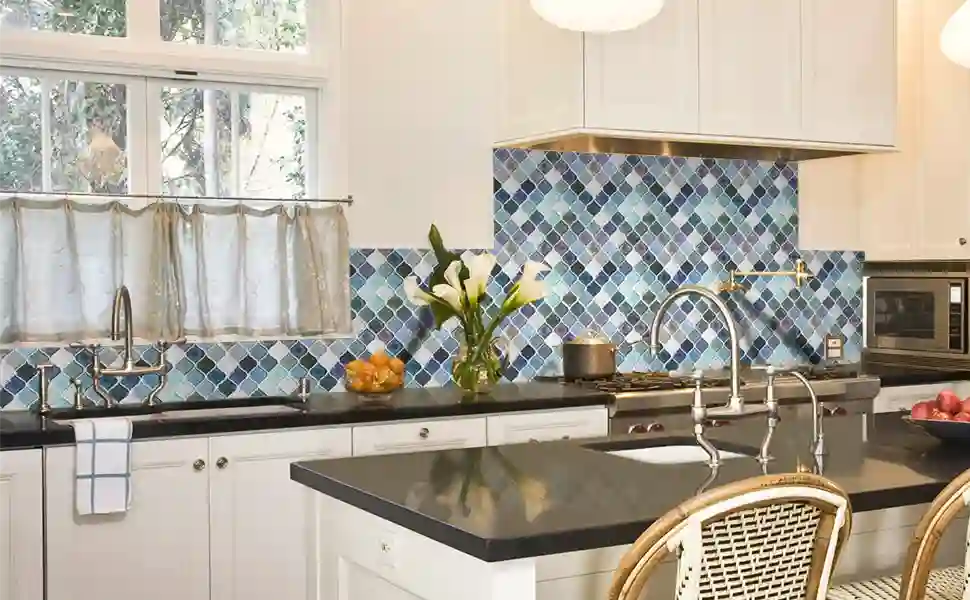A peel-and-stick vinyl wall tile backsplash is an excellent way to add a new look to your kitchen. Also, be sure to understand the sizing of each tile. A peel-and-stick vinyl wall tile backsplash is very easy to install. Once you have removed the protective backing, you simply peel off the tile and place it in place. You can plan your layout and identify obstacles by placing the full row of tiles first. Once you’ve placed the full row of tiles, you can decide where to place the half tiles. If you’re using partial tiles, you’ll want to place them in discrete locations where the pattern can’t be discerned. You can cut the pieces in such a way that you’ll be able to easily see the difference between the two tiles.
While a peel-and-stick tile backsplash can be a great option for temporary applications, it can quickly become a tripping hazard. It can be difficult to remove, especially if you’ve never used it before. To install a backsplash, you should first measure the area where you’ll be laying it before laying it down. A good guideline is to measure at least six inches from the wall, as this will ensure that the backsplash will adhere properly. Because it’s so easy to install, a peel-and-stick backsplash is an excellent choice for temporary installations. Renters often choose it because it can be easily removed, which is useful if they’d like to change the decor of their kitchen or bathroom. When installed correctly, however, a peel-and-stick tile can last for many years. There’s no grout or drying time needed to apply the backsplash, which is ideal if you’re renting your home.
They can be applied to the entire backsplash or just part of it. The tiles are easy to apply and are made of durable vinyl that will not discolor over time. They are also easy to clean. The downside to these tiles is that you should take extra care to avoid scratching or damaging the surface. There are many advantages to using a peel and stick vinyl wall tile backsplash. For one, they do not need grouting, and they don’t yellow over time. Another benefit is that you can install them over existing tiles or concrete walls. But be careful not to get a cheap product as it will look cheap and unattractive. It will be difficult to grout these three-dimensional tiles, and you may have to spend more time cleaning them afterward. There are several disadvantages to a peel and stick vinyl wall tile backsplash, but the most noticeable one is that it will take up more space than it was intended to. They will also tend to break easily, and they won’t fit the pattern you want. To avoid this, you should always buy a tile that has a pre-applied adhesive.
A peel-and-stick backsplash is a great choice for temporary applications. It can be removed and reused easily. Because the tile is not permanent, it’s easy to remove and move. It can be placed on countertops, walls, and even ceilings. Unlike traditional tiles, peel-and-stick tiles don’t need grouting. While you don’t need special skills to install a peel-and-stick tile backsplash, it’s important to be aware that the adhesive used to hold the tile on the wall is not permanent. After installation, the tile will perfectly adhere to the wall.
A peel-and-stick tile backsplash is a great way to create a new look in a kitchen. The adhesive is designed to adhere to a wall and is easy to remove if you need to remove it. Because the tile is not adhesive, you don’t need to worry about the adhesive sticking to the wall. A peel-and-stick backsplash is a great option for those with limited skills. You’ll save money by avoiding demolition and dry-layout time. Moreover, you’ll be able to see how your panels will look before you start installing them.


Comment here